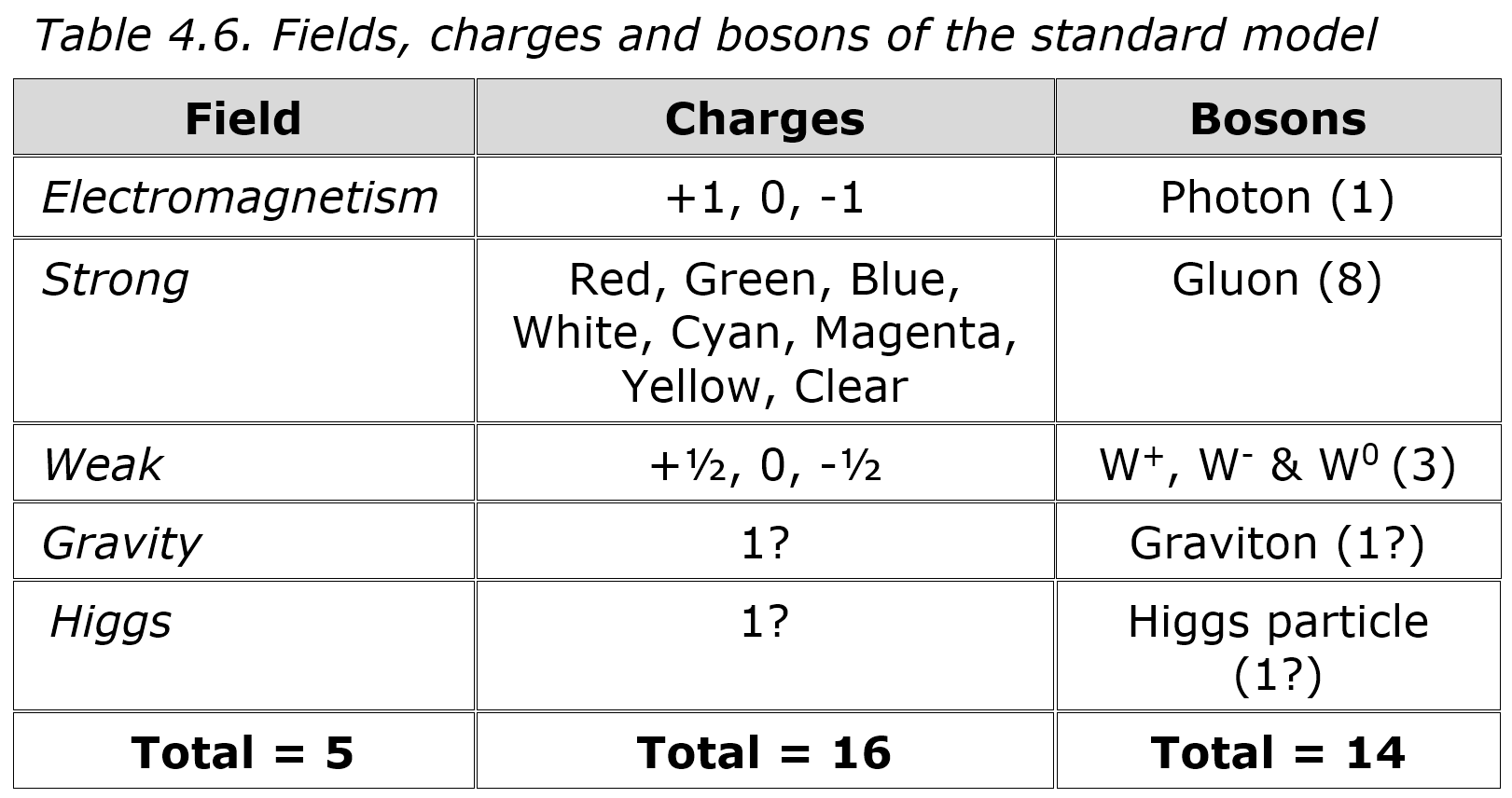Occam’s razor, not to multiply causes unnecessarily, is the pruning hook of science but the standard model has done just that. Physical realism began as a simple theory of mass, charge and spin but today it has isospin, hypercharge, color, chirality, flavor and other esoteric features. The standard model today needs sixty-two fundamental particles (Note 1), five invisible fields, sixteen charges and fourteen bosons to work (Table 4.6). If it was a machine, one would have to hand-set over two dozen knobs just right for it to light up. If physical realism is preferred today, it isn’t due to its simplicity.

One might expect completeness for this level of complexity but the standard model is unable to explain gravity, proton stability, anti-matter, quark charges, neutrino mass, neutrino spin, family generations, quantum randomness or why inflation occurred. Nor can it explain dark energy or dark matter, i.e. most of the universe. And with each new result it grows, so inflation needs a hypothetical symmetron field to explain it and neutrino mass needs another 7-8 arbitrary constants:
Note1. Two leptons with three generations plus anti-matter variants is 12. Two quarks with three generations plus anti-matter variants and three colors is 36. Plus one photon, eight gluons, three weak bosons, one graviton and the Higgs is another 14. The total is 62.